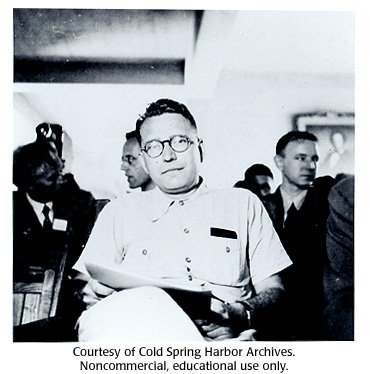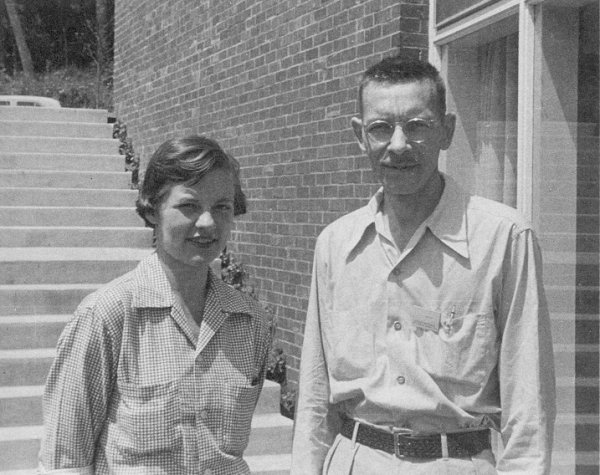January 24
Although he came to national attention as co-discoverer (with Francis Crick) of the structure of DNA, Watson has aroused controversy at all stages of his life (see biography in Wikipedia) - characteristically, Watson entitled his memoir Avoid Boring People. Some of his beliefs and attitudes (e.g. misogyny) are explicitly presented in The Double Helix, but others are more implicit. He has been criticized for appropriating Rosalind Franklin’s data without her knowledge or consent and for failing to give proper credit for her contributions, which were crucial for Watson and Crick’s discovery. In this connection, it’s worth thinking about Watson’s purpose in offering the anecdote about Willy Seeds, which appears in the two pages just before Chapter 1.
The pictures below show some of the key people involved in the story of how DNA was identified as the genetic material and how its structure was discovered. The genetic material of a cell was known to be contained within chromosomes, which are composed of DNA and protein - up through the 1940’s, most researchers believed that protein would be found to be the material that carried genetic information, that is, the genes. In 1947, Avery, MacLeod, and McCarty, studying pneumococcal bacteria, published a paper that provided strong evidence that it was the bacterial DNA, not the protein, that encoded genetic information - but this was not widely accepted. In 1951, Alfred Hershey and Martha Chase described experiments using bacteriophage (viruses) that further supported DNA as the genetic material….but this was still not widely accepted! (see this article for an interesting discussion of how people eventually became convinced that DNA contained the genetic material). It was determination of the structure of DNA, through the x-ray diffraction studies of Rosalind Franklin and the model building of Watson and Crick, that turned the tide.

Oswald Avery who, with MacLeod and McCarty, provided powerful evidence that DNA was the genetic material.

Edwin Chargaff, whose "rules" offered strong insight about DNA base-pairing.

Martha Chase and Al Hershey, who strengthened the idea that DNA, not protein, is the genetic material.

Max Delbruck and Salvador Luria - leaders of "The Phage Group".

Ava Helen and Linus Pauling

Peter Pauling

Rosalind Franklin

Maurice Wilkins

Maclyn McCarty (who worked with Avery) meets Watson and Crick.
Here’s a link to several footnotes from Anne Sayre’s biography of Rosalind Franklin. These include Crick’s description of Watson’s book as “a contemptible pack of damned nonsense” (!) and his estimate that RF would have discovered the double helix structure of DNA within 3 weeks to 3 months. (Sayres was an accomplished author and a friend of Franklin’s, whom she met through conferences she attended with her husband, a crystallographer)
Here’s a very objective and readable review of Rosalind Franklin’s contributions and interactions with the other DNA researchers:
Watson dedicated his book to Naomi Mitchison, a famous writer and feminist, whose brother was J.B.S. Haldane, a towering figure in 20th century genetics. Prior to her writing career, Naomi was a budding biologist who, together with her brother, published experiments that demonstrated the first linkage between genes in a mammal.
